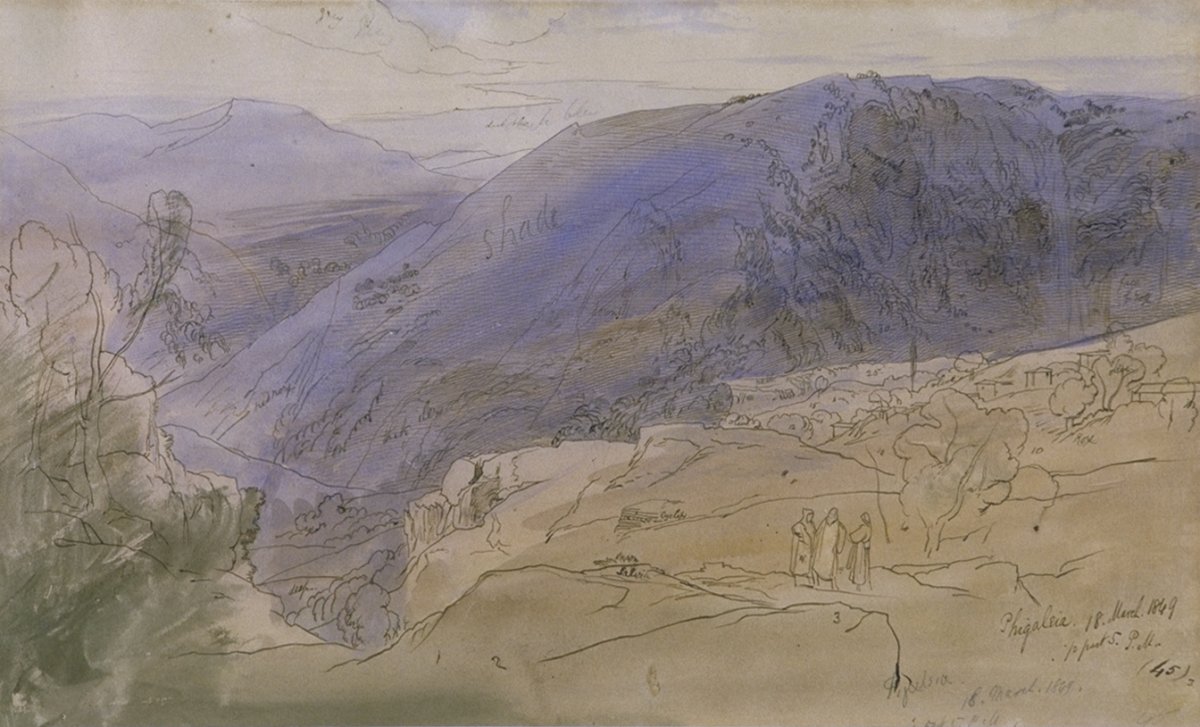Phigaleia

-
About the work
- Location
-
Country: Other
City: public exhibitions
Many of the locations depicted by Lear during his travels in Europe and the Near East were selected not only for their scenic beauty but also for their historical associations.
Phigaleia (or Phigalia) was an ancient Greek city, high in the mountains of the Peloponnese, Arcadia. It was located near to Bassae, the site of a fifth-century BC temple to Apollo, designed by Ictinus, one of the architects of the Parthenon. Phigaleia is an ancient Greek city in the south-west corner of Arcadia. Lear visited the area in spring 1849, during his tour of southern Greece with Franklin Lushington, his closest friend. Lear later produced an oil painting of 'The Temple of Bassae or Phigaleia' (1854; Fitzwilliam Museum, Cambridge).
Colour notes and references to the appearance of objects are characteristic of Lear’s travel studies. His notes also reflect his linguistic creativity and humour, most apparent in his verse. Features are sometimes spelt phonetically, such as the inscription ‘rox’ on this work.
-
About the artist
Edward Lear, best known for nonsense verse and limericks, was also a topographical landscape painter, musician, travel writer, ornithological and natural history draughtsman and an illustrator. Largely self-taught as a painter, he began by drawing animals at Knowsley Hall menagerie; later moving to landscape painting. He lived in Italy from 1837 to 1848, returning briefly when Queen Victoria requested twelve drawing lessons. He later studied at the Royal Academy Schools (1850-51). In 1852 he was introduced to William Holman Hunt, whose paintings became a great influence. From the early 1860s, Lear’s reputation as a landscape painter declined, perhaps partly a result of the mass-produced watercolours he made, which he called ‘Tyrants’.
-
Explore
- Places
- Subjects
- Materials & Techniques
-
Details
- Artist
-
Edward Lear (1812 - 1888)
- Title
- Phigaleia
- Date
- 18 March 1849
- Medium
- Watercolour on paper
- Dimensions
- height: 28.00 cm, width: 46.50 cm
- Inscription
- d&insbr
- GAC number
- 9582